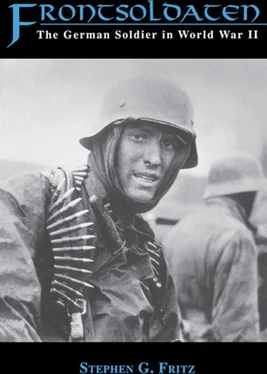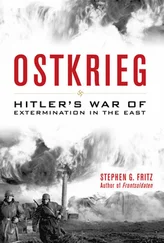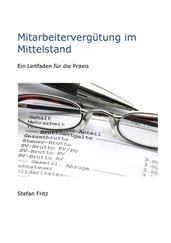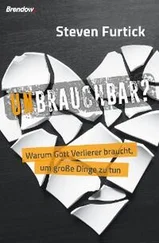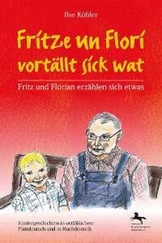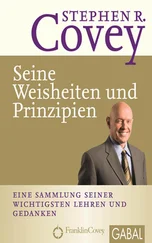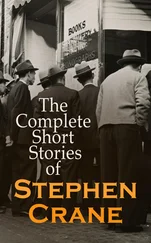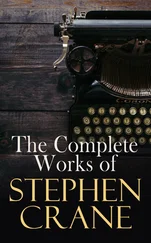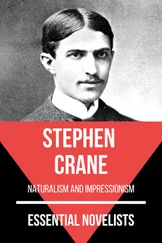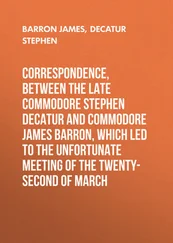Stephenson, Jill. “‘Emancipation’ and Its Problems: War and Society in Württemberg, 1939–1945.” European History Quarterly 17 (1987): 345–65.
——. “Modernization, Emancipation, Mobilization: Nazi Society Reconsidered.” In Elections, Mass Politics, and Social Change in Modern Germany, ed. Larry E. Jones and James Retallack. New York, 1992.
Stern, Fritz. “Germany 1933: Fifty Years Later.” In Dreams and Delusions: National Socialism in the Drama of the German Past, ed. Fritz Stern, pp. 119–46. New York, 1987.
——. “National Socialism as Temptation.” Dreams and Delusions. National Socialism in the Drama of the German Past, ed. Fritz Stern, pp. 147–91. New York, 1987.
Stouffer, Samuel, et al. The American Soldier. 2 vols. Princeton, N.J., 1949.
Stoves, Rolf. 1. Panzer-Division, 1935–1945: Chronik einer der drei Stamm-Divisionen der deutschen Panzerwaffe. Bad Nauheim, 1961.
Streim, Alfred. Die Behandlung sowjetischer Kriegsgefangenen im “Fall Barbarossa.” Heidelberg and Karlsruhe, 1981.
——. Sowjetische Kriegsgefangene in Hitlers Vernichtungskrieg: Berichte und Dokumente, 1941–1945. Heidelberg, 1982.
Streit, Christian. “Die Behandlung der sowjetischen Kriegsgefangenen und völkerrechtliche Probleme des Krieges gegen die Sowjetunion.” In “Unternehmen Barbarossa “: Der deutsche überfall auf die Sowjetunion 1941, ed. Gerd Ueberschär and Wolfram Wette, pp. 197–218. Paderborn, 1984.
——. “The German Army and the Politics of Genocide.” In The Policies of Genocide: Jews and Soviet Prisoners of War in Nazi Germany, ed. Gerhard Hirschfeld, pp. 1–14. London, 1986.
——. Keine Kameraden: Die Wehrmacht und die sowjetischen Kriegsgefangenen, 1941–1945. Stuttgart, 1978.
——. “Sowjetische Kriegsgefangene—Massendeportation—ZWangsarbeiter.” In Der Zweite Weltkrieg: Analysen, Grundzüge, Forschungsbilanz, ed. Wolfgang Michalka, pp. 747–60. Munich, 1989.
Struve, Walter. Elites against Democracy: Leadership Ideals in Bourgeois Political Thought in Germany, 1890–1933. Princeton, N.J., 1973.
Turner, Henry A. “Fascism and Modernization.” In Reappraisals of Fascism, ed. Henry A. Turner, pp. 117–39. New York, 1975.
Ueberschär, Gerd R., and Wolfram Wette, eds. “Unternehmen Barbarossa”: Der deutsche überfall auf die Sowjetunion, 1941. Paderborn, 1984.
U.S. Strategic Bombing Survey, Morale Division. “Social and Psychological Factors Affecting Morale.” In Propaganda in War and Crisis, ed. Daniel Lerner, pp. 355–366. New York, 1972.
U.S. War Department. Handbook on German Military Forces. Intro. Stephen E. Ambrose. Baton Rouge, La., 1990.
van Creveld, Martin. Fighting Power: German and U.S. Army Performance, 1939–1945. Westport, Conn., 1982.
Van Doorn, Jacques. “Ideology and the Military.” In On Military Ideology, ed. Morris Janowitz and Jacques Van Doorn, pp. xv-xxix. Rotterdam, 1971.
Watt, Donald Cameron. How War Came: The Immediate Origins of the Second World War 1938–1939. New York, 1989.
Wegner, Bernd, ed. Zwei Wege nach Moscow: Von Hitler-Stalin-Pakt bis zum “Unternehmen Barbarossa.” Munich, 1991.
Welcker, I., and F.F. Zelinka. Qualifikation zum Offizier? Eine Inhaltsanalyse der Einstellungsvoraussetzungen für Offiziere vom Kaiserheer zur Bundeswehr. Frankfurt, 1982.
Werthen, Wolfgang. Geschichte der 16. Panzer-Division, 1939–1945. Bad Nauheim, 1958.
Wette, Wolfram. “Difficult Persuasion. The Psychological Mobilization of the German Population for World War II.” UNESCO Yearbook on Peace and Conflict Studies, 1985: 49–71.
Wette, Wolfram, and Gerd R. Ueberschär, eds. Stalingrad: Mythos und Wirklichkeit einer Schlacht. Frankfurt, 1992.
Zitelmann, Rainer. Hitler: Selbstverständnis eines Revolutionärs. Stuttgart, 1987.
Zydowitz, Kurt von. Die Geschichte der 58. Infanterie-Division, 1939–1945. Kiel, 1952.
Aicher, Otl: strain, 95
Albertsen, Erich: training, 25
alcohol: coping with stress, 73, 120; use against cold, 113
Altner, Helmut: lost years, 221; strain, 95
American soldiers: German view of, 61
Andersch, Alfred (novelist): and war literature, 231
Ansbacher, H.L. (historian): on Landsers’ support for National Socialism, 210-11
anti-tank warfare: accounts of tank destruction, 41-42, 44, 48, 88-89; training for, 23
anxiety. See fear; psychological conditions; stress
Aretin-Eggert, Max: combat, 45; sensations, 138; strain, 85, 88
atrocities: against civilians, 50-51, 57-58, 97-98; against Jews, 58-59, 198; against partisans, 50-51, 56; against prisoners, 52-57; soldiers’ reaction to, 52-55, 57-59; Wehrmacht policy, 54, 97, 199
Bader, Rudolf: sensations, 147
Barbusse, Henri (novelist): on effect of rain, 106
Bartov, Omer (historian): ideological motivation of Landsers, 206, 266 n 35; on Landsers’ support for National Socialism, 241; on politicization of discipline in Wehrmacht, 239
battle. See combat
Becker-Glauch, Reinhard: sensations, 144, 148; ideology, 211
Beckering, Bernhard: combat, 42-43; comradeship, 183; sensations, 143; strain, 99-100, 103
Benn, Gottfried (novelist): on National Socialism, 208; on “new man,” 188
Blohm, Hermann: training, 26
bodily functions: and cold, 117
Böhringer, Friedrich: sensations, 143
Böll, Heinrich (novelist): and war literature, 231
Bollweg, Ansgar: ideology, 189; sensations, 137-38
Borscheid, Peter (historian): on everyday history, 7
Brauchitsch, Field Marshal Walter von: on National Socialism, 208
Brecht, Bertholt (author): on suffering, 37
Browning, Christopher (historian): on atrocities, 50, 54; on everyday history, 5
Buhl, Bernhard: comradeship, 172, 178; natural forces, 119
camaraderie. See comradeship
Canadian soldiers: German view of, 61
casualties: cries of wounded, 47, 114, 151; evacuation of, 64-67; impact on units, 191-92; medical treatment of, 64; reaction to being wounded, 63, 65-67, 141-42; as result of weather, 112-13
censorship: of letters, 8-9
climate: cold and snow, 110-14, 117; dust, 108; fear of Russian winter, 109-10; impact of, 104-5, 111; mud, 106-7; rain, 105-6
combat: artillery, fear of, 62-63; atrocities in, 50-58; breakdown in, 88-89, 137-40; comparisons with earlier wars, 153-54; death in, 34-35, 45-48; destructiveness of, 45-47, 50; enemy, view of, 59-61, 204; exhilaration of, 50, 146-47, 149-50; in extreme weather, 113-14; fear in, 30, 32-33, 39-40, 46, 135-41, 146; first impressions of, 33-35; Flucht nach vorn, 83; impact of casualties, 191-92; impact on horses, 153; inability to describe, 37; isolation at front, 36-37, 111, 166; numbness in, 35, 46, 88; panic in, 70-71, 97; personal nature of, 31-32, 36, 38-45, 49; reaction to, 36-37, 41, 47, 49, 53, 67-68, 88, 98, 146; reflections on, 37, 45, 49-50, 103, 147-48, 193; smells of, 34, 152-53; sounds of, 40, 42, 47, 150-52; as a test, 135-36; training, effects of, 13, 19-20, 24-25, 28, 46. See also psychological conditions; stress
comradeship: between officers and men, 18, 25, 158, 167; and civilian morale, 183; development of, 18-19, 167; and egalitarianism, 158, 183; and fighting effectiveness, 159, 235; group acceptance, 165; group loyalty, 173-75; and Hitler Youth, 160-61; importance of, 156-57, 164-69, 174, 235; intensity of, 172-73, 179-80; loss of, 184; and morale, 82-83; and mutual obligation, 98, 169-71, 175, 206; nature of, 156-57, 166, 170, 184-86; and notion of family, 18-19, 164, 236; pain at death of comrade, 175-78, 184-85; pride in unit, 173-74; sense of uniqueness, 181-82; shared experiences, 167-68; and training, 18-19, 25; and tug of front, 178-79; and Volksgemeinschaft, 157, 159, 182-84, 236, 238; Wehrmacht efforts to create, 157-59
Читать дальше
